Deciding where to use Turface Gritty Mix
jamiedolan
13 years ago
Featured Answer
Sort by:Oldest
Comments (24)
meyermike_1micha
13 years agotapla (mid-Michigan, USDA z5b-6a)
13 years agoRelated Discussions
Question about Turface for Gritty Mix
Comments (7)Since I had to order my turface on the internet. I had not very much of it. The bark was 1/4 size from a good orchid place, the turface was 1/4 and so was the granite. I can't see any point in losing some of the turface because it gets ground into powder from the screening. It worked out great for me anyway. I was a bit heavier on the bark, due to a lack of the turface and granite, but the plants still look good and they are not sitting there wet. I checked and they are draining out. So, I don't think one needs to screen it. If the plant is a super fussy plant and ultra expensive maybe, but these were just test plants. They need good, but not excellent drainage....See MoreSubsitute for Turface in Gritty Mix
Comments (8)Clumping litters may be partially fired to give them some stability, but they wouldn't clump properly if they were calcined. There are some non-clumping cat litters that are marketed as "low-dust" or "lightweight" that may be calcined, but this can be difficult to determine without buying and testing (dropping in a cup of water, freeze/thawing to determine stability). There are some examples at the link below. Here is a link that might be useful: Cat litter as bonsai media...See MoreWhich Turface product for Gritty Mix?
Comments (3)I use MVP long term or NAPA 8822 ($$$cheaper$$$) for shorter term if I will have to pot up in a few years. I don't have any evidence that the latter would not hold up long term though. I read about soaking the mix in distilled water overnight and testing the pH of the water, but I didn't think it matters enough to go through the effort. I concur with what gardengal48 stated....See MoreNewbie: Gritty mix w/o bark? Unscreened turface in layers?
Comments (5)Thanks Lauren and Greenman. I'm trying to avoid screening and sifting due to space and dust issues, so you're right that I should just buy the right size fines - but that's the problem - citylife has its limitations. I can't find them except for tiny bags online that cost a fortune and I have a whole bunch of large plants. i just found this on amazon - price seems too good to be true for the perfect size. Pine bark that apparently has been heated to be aged?? So can you tell me if this so-called Deep Jungle Bark (pine) would work for gritty? Thanks much for your time and help marie Description Deep Jungle Bark 1/8 inch to 1/4 inch - 24 quarts.Stable and pH adjusted medium does not accumulate unwanted salts; temperatures exceed 150ºF during the aging process, so pathogens cannot grow and any present are killed; natural colonies of beneficial micro-organisms flourish; aging removes waxes from surface of bark chip, allowing Deep Jungle Bark to hold water & nutrients on outer surface; unlike fresh bark, Deep Jungle Bark's aged surface provides instant & consistent rewetting; excellent delivery of water & nutrients from day About this item Features Deep Jungle Bark 1/8 inch to 1/4 inch - 24 quarts Use for pet habitat substrate AND/OR for growing orchids. Deep Jungle Bark is naturally decorative, washable, and reusable. Deep Jungle Bark gives consistent hydration, an ideal wet/dry cycle and provides excellent longevity. What makes Deep Jungle Bark unique is the proprietary aging process which results in superior performance when compared to raw pine bark. The aging process destroys pathogenic micro-organisms while at the same time promoting the formation of beneficial organisms such as Penicillium and Trichoderma. Deep Jungle Bark is a sustainable growing medium produced from the finest quality, 100% pure New Zealand Pinus radiata bark. Pinus radiata is sourced from renewable, man-made forests ensuring availability into the future....See Morejamiedolan
13 years agojojosplants
13 years agojamiedolan
13 years agojojosplants
13 years agojamiedolan
13 years agojodik_gw
13 years agojojosplants
13 years agolandperson
13 years agojamiedolan
13 years agogreenman28 NorCal 7b/8a
13 years agojamiedolan
13 years agojodik_gw
13 years agojamiedolan
13 years agojodik_gw
13 years agogreenman28 NorCal 7b/8a
13 years agojamiedolan
13 years agogreenman28 NorCal 7b/8a
13 years agojamiedolan
13 years agogreenman28 NorCal 7b/8a
13 years agomeyermike_1micha
13 years agojodik_gw
13 years ago
Related Stories

KITCHEN DESIGNNew This Week: 2 Kitchens That Show How to Mix Materials
See how these kitchens combine textures, colors and materials into a harmonious whole
Full Story
LAUNDRY ROOMSSoak Up Ideas From 3 Smart Laundry Rooms
We look at the designers’ secrets, ‘uh-oh’ moments and nitty-gritty details of 3 great laundry rooms uploaded to Houzz this week
Full Story
DECORATING GUIDESCity View: History Meets Modern Tastes in St. Louis
This Missouri city celebrates a heritage that goes way back, but its architecture and interiors are moving decidedly forward
Full Story
ROOM OF THE DAYRoom of the Day: Bedroom Takes a Creative Approach to A-Frame Design
Rather than fix the strange layout, this homeowner celebrated it by mixing the right materials and textures
Full Story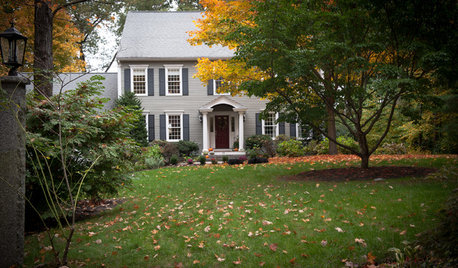
HOUZZ TOURSMy Houzz: Easygoing Elegance for a Massachusetts Saltbox
With beers on tap, a pizza oven and a guitar collection, this home mixes classic with generous doses of fun
Full Story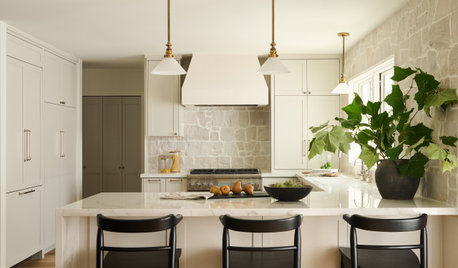
KITCHEN WORKBOOKHow to Remodel Your Kitchen
Follow these start-to-finish steps to achieve a successful kitchen remodel
Full Story
BATHROOM VANITIESAll the Details on 3 Farmhouse-Style Vanities
Experts reveal dimensions, finishes, paint colors, hardware, faucets and more
Full Story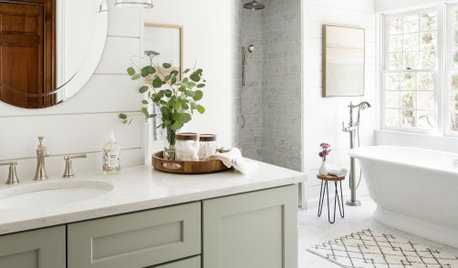
BATHROOM DESIGN14 Design Tips to Know Before Remodeling Your Bathroom
Learn a few tried and true design tricks to prevent headaches during your next bathroom project
Full Story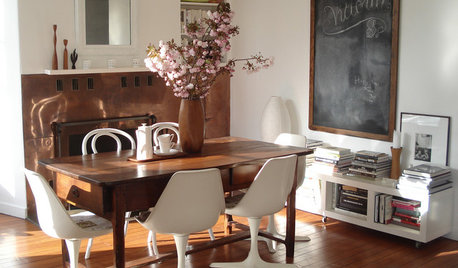
LIFEThe Wisdom of Kenny Rogers, for Declutterers
No need to gamble on paring-down strategies when the country music legend has already dealt out some winning advice
Full Story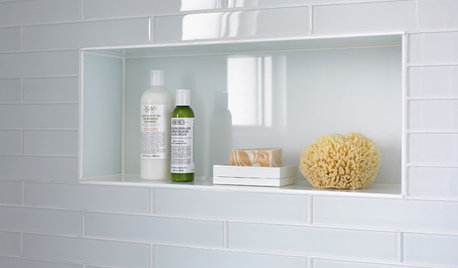
SHOWERSTurn Your Shower Niche Into a Design Star
Clear glass surrounds have raised the design bar for details such as shampoo and soap shelves. Here are 4 standouts
Full Story



jodik_gw